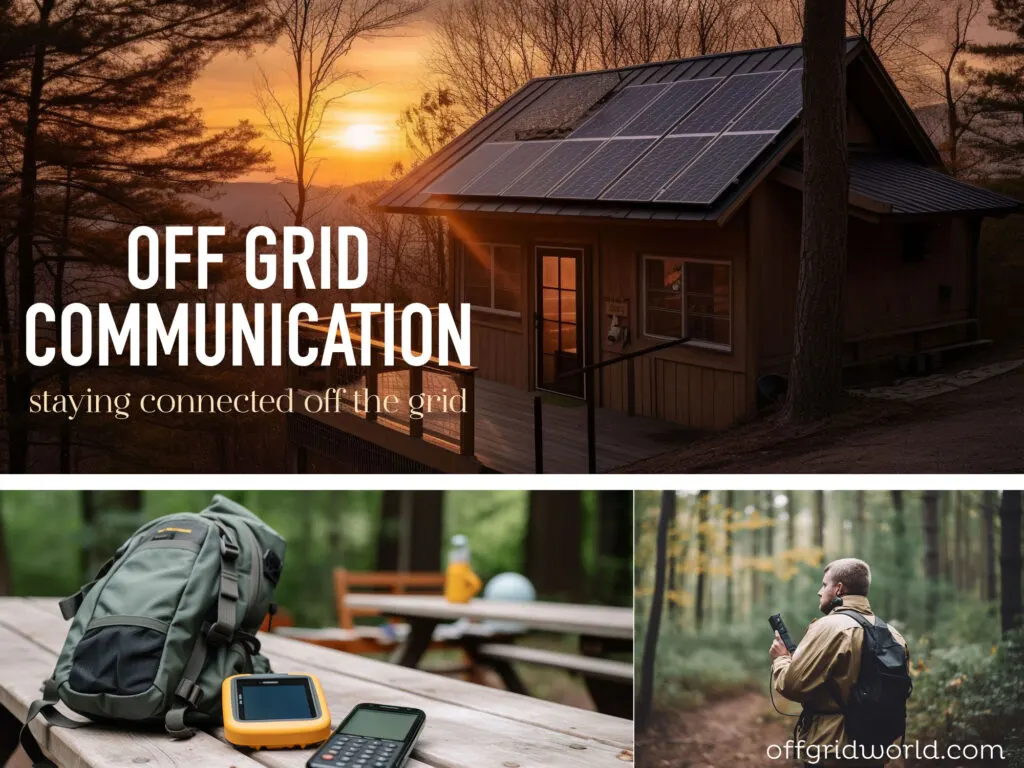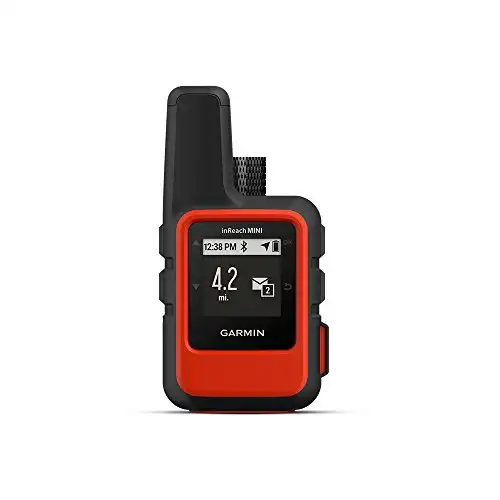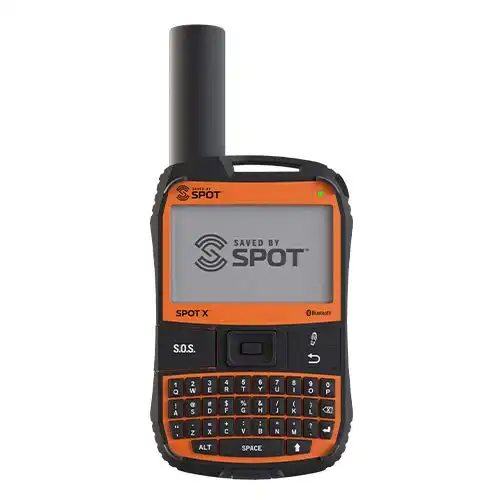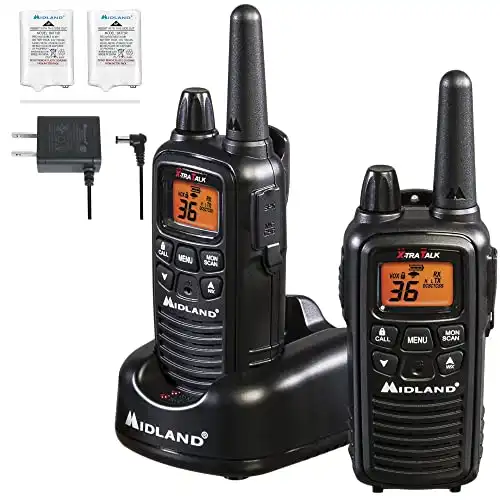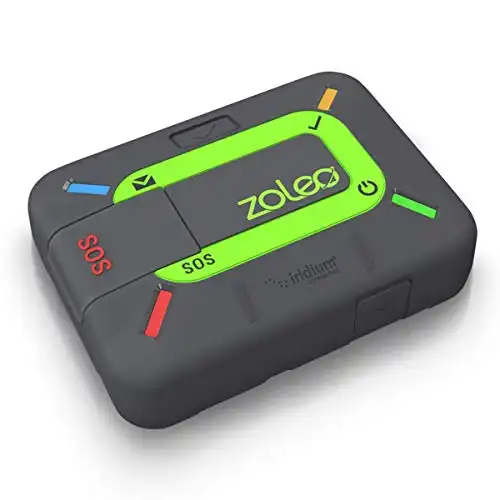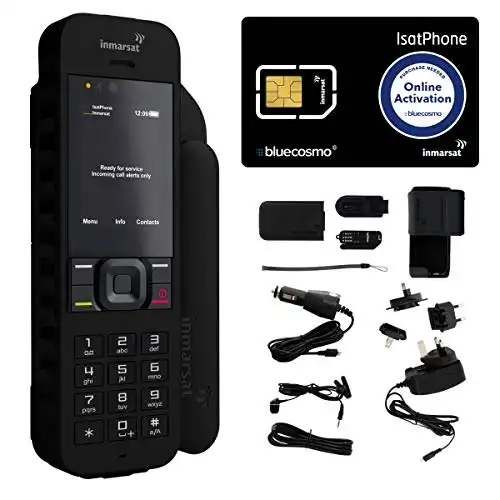Communication methods are essential to consider as more people choose to live off grid or travel in remote areas. In such areas, traditional communication methods like cell phones and internet may be unavailable or unreliable, making staying connected with the outside world challenging. Off-grid communication refers to the various methods people can use to communicate with each other when outside the range of traditional communication networks.
Several options are available for off grid communication, ranging from high-tech to low-tech. Some of the high-tech options include satellite phones, GPS trackers, and mesh networks, while low-tech options include two-way radios and landlines. Each option has advantages and disadvantages, and the choice of which one to use will depend on factors such as the location, the purpose of the communication, and budget. Regardless of the method, communication is essential for people who want to stay connected and safe while living or traveling off grid.
The importance of off grid communication
Many people choose to live off grid to escape the outside world, but having a reliable means of communication is still essential. In an emergency, being able to reach someone can mean the difference between life and death.
For example, if someone is lost or injured in an area with no mobile network, they may be unable to call for help using a cell phone. However, with a reliable communication device such as a satellite phone, they can still call for help and get needed assistance.
In addition to emergencies, communication devices are also important for outdoor enthusiasts who want to stay connected while exploring remote areas. Whether living completely off the gird or hiking, camping, or backpacking, having a reliable means of communication can provide peace of mind and ensure that you can stay in touch with others if necessary.
Overall, communication is a critical component of any emergency preparedness plan. By investing in reliable devices, individuals can ensure that they can stay connected and safe no matter where their adventures take them.
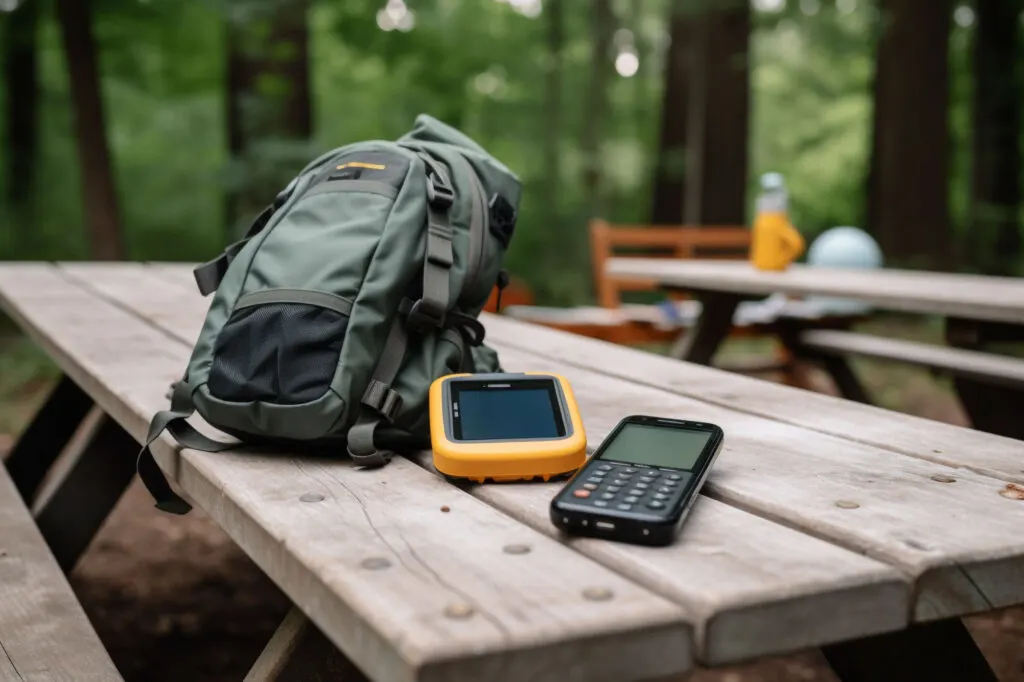
Types of off-grid communication devices
Several types of devices can be used to stay connected off the grid. Here are some of the most common types:
Satellite phones
Satellite phones are a reliable option for communication where traditional methods are unavailable. They work by transmitting signals to a network of satellites orbiting the Earth, allowing users to make calls and send messages from virtually anywhere in the world.
One of the most significant advantages of a satellite phone is reliability. Unlike traditional cell phones, which rely on terrestrial networks that may not be available in remote or mountainous places, satellite phones provide a much more consistent connection in many areas.
This makes them an ideal choice for outdoor enthusiasts, hikers, and adventurers who need to stay in touch with others while exploring off-the-beaten-path destinations.
Another benefit of satellite phones is their versatility. Many modern satellite phones come equipped with GPS capabilities, allowing users to track their location and navigate using satellite imagery. Some models even offer weather alerts and emergency services, making them a valuable tool for staying safe and prepared in remote areas.
One disadvantage of satellite phones is that their signal may get interrupted by heavy cloud cover or inside some buildings.
While satellite phones can be expensive and usually require a service plan, they are an excellent option for those who need to stay connected off grid.
Mesh networks
Mesh networks are a newer option in the communication market. These networks use a decentralized approach to communication, allowing devices to connect to one another without relying on a centralized hub or traditional infrastructure.
This means that even without access to traditional internet or cellular networks, devices can still communicate with one another, making it an ideal solution for those in remote areas or in emergency scenarios.
A mesh network is formed when devices connect directly, creating a self-sufficient and resilient network. Because each device acts as a node in the network, data can be transmitted from one device to another, allowing communication to occur even if one or more devices are offline. This makes mesh networks incredibly reliable, as they are not dependent on any one device or infrastructure to function.
One of the biggest benefits of mesh networks is their ability to be set up quickly and easily without requiring any special equipment. All that is needed is a group of devices that can connect to one another, such as smartphones or laptops.
This makes mesh networks a great option for those in disaster-stricken areas, as they can be quickly deployed to provide communication in the aftermath of a natural disaster or other emergency.
GoTenna is an example of a company offering mesh network products for large-scale operations and for personal use off the grid. With a goTenna device, users can create their own network and communicate with their mobile devices regardless of whether or not they have cell service.
GPS messengers
GPS messengers work by transmitting a user’s location and messages via satellite networks. This means users can stay connected with loved ones or colleagues even in areas where traditional communication methods aren’t available.
Some GPS messengers also offer additional features, such as emergency SOS signals and tracking capabilities to share GPS location with others and call for help in an emergency. They are especially useful for outdoor enthusiasts who venture off the beaten path or for those who work or live in remote locations.
There are a variety of GPS messengers available on the market, each with its own unique features and capabilities. Some popular options include devices from companies like Garmin, SPOT, and inReach. Before purchasing a GPS messenger, it’s important to carefully research the different options and choose one that best suits your needs.

Ham radios
Ham radios are a popular option for off grid communication, especially among amateur radio operators. They work by transmitting and receiving radio signals, allowing operators to communicate with others who have a ham radio. While ham radios require a license to operate, they can be a reliable option to consider.
Ham radios operate on different frequencies than regular radio stations and can transmit signals over long distances. They can also send and receive messages in Morse code, making them a versatile option for radio communications.
One of the best things about ham radios is that they are self-contained and do not require any external power source. They can be operated using rechargeable batteries or a generator or solar panel. This makes them an ideal communication tool for those living off the grid or in areas without access to electricity.
In addition to being a reliable source of communication, ham radios are also a fun and social hobby. Operators can connect with other enthusiasts near and far and join in on contests and events. It’s a great way to meet new people and stay in touch with others when living remotely.
Walkie-talkies
Walkie-talkies are a simple and affordable option for communicating. They work by transmitting and receiving radio signals to others with a walkie-talkie.
They are light weight, easy to use, and don’t require any cell phone service or internet connection. They are perfect for those enjoying outdoor activities who want to stay in touch with each other.
One of the biggest advantages of walkie-talkies is their range. Unlike cell phones, which rely on cellular towers, walkie-talkies use radio waves to communicate. This means that they can work over long distances, especially in open areas without a lot of obstructions like trees and hills.
Another advantage of walkie-talkies is their durability. Most models are built to withstand rugged outdoor conditions. They are often water-resistant and can withstand drops and impacts.
While they can have a limited range, they can be a great option for checking in with loved ones on a remote property. For families living off grid, walkie talkies can keep people in contact with each other and alert each other to problems.
Years ago when I lived on a ranch in the middle-of-nowhere Nebraska, we frequently used walkie-talkies to communicate with family members working miles away from the house with cattle or on fences. Most of us did not have a mobile phone then, so in an emergency situation such as a bad fall off a horse or a snake bite, the walkie-talkies could literally be the difference between life and death.
Cell phones
While cell phones rely on cellular coverage, there are ways to use them even without cell service or a paid phone plan. One option is to use a messaging app like Bridgefy that works through a mesh network as mentioned above. This type of network allows phones to communicate with each other directly, without the need for cell towers.
In addition, there are ways to boost your cell phone’s signal strength in areas with poor coverage. One method is to use a signal booster, which can amplify the weak signal and improve call quality. This is an option we once had to use on a hilly, forested property where we lived. We got the signal booster up into a tree and were able to use our cell phones where previously we had no signal.
Carrying an extra battery pack or solar USB charger can help keep your phone charged and ready for emergencies. Even without a service plan, all mobile phones can be used to dial 911 in emergencies. Cell phones can also be used in conjunction with several of the other devices we mention in this article.
Landlines
While land lines are not a portable option, they can be a reliable alternative to cell phones for those living off the grid. Landlines work by connecting to a wired network, allowing you to make calls from your home or office.
Landlines have been around for decades, and they still remain a reliable option when living off grid. While cell phones and the internet have taken over the communication industry, landlines are still an important addition to any off grid setup if other communication methods don’t work.
One major advantage of landlines is their reliability. Unlike cell phones, landlines don’t require any external power source, which makes them a perfect choice for off gridders. Landlines can provide a clear and stable connection where no cell network is available.
Another benefit of landlines is their affordability. Landlines are typically cheaper than cell phones each month and don’t require a data plan. This makes them an ideal option for those on a tight budget who still want to have a reliable means of communication.
In addition, landlines are more secure than cell phones. They are less vulnerable to hacking or interception, which makes them a better option for sensitive conversations. And in case of an emergency, landlines can be used to call for help, while cell phone reception might be too weak to make a call.

Features to look for in communication devices
When choosing a device, several features can make all the difference in your ability to stay connected and safe. You may ultimately decide that having more than one device is the best option, depending on your situation. Here are some key features to look for:
Range and coverage
One of the most important features to consider is the range and coverage of the device. Different devices have different ranges, so it’s essential to choose one that will work in the areas where you’ll be living or traveling. Look for devices with long-range communication capabilities, such as satellite phones or two-way radios.
GPS and tracking
GPS and tracking features are another important consideration. These features can help you navigate unfamiliar terrain and can also be used to send your location to responders in case of an emergency. Look for devices that offer GPS and tracking capabilities, such as satellite messengers or personal locator beacons.
Emergency features
Emergency features are essential for off grid communication devices. Look for devices that offer an SOS button or emergency alert function that can quickly summon help. Some devices also offer additional emergency features, such as a built-in flashlight or whistle.
Ease of use
Communication devices should be easy to use, even for those who are not tech-savvy. Look for devices that have a simple interface and intuitive controls. Some devices also offer voice prompts or visual aids to help guide you through the setup process.
Power and reliability
Communication products need to be powerful and reliable to work in remote areas. Look for devices that offer long battery life, durable construction, and resistance to water, dust, and other elements. Some devices also offer backup power options, such as small solar panels or hand-crank generators.
Communication Gadgets: Top Picks
Following are some of the top off grid communication devices on the market, chosen for their reliability, durability, and user satisfaction.
Reliable communication is vital for safety and staying connected with loved ones when you’re living or traveling off the grid. These devices will keep you connected without relying on cell towers or Wi-Fi. Here are our top picks for the best off grid communication devices.
Garmin inReach Mini Satellite Communicator

Pros
- Its small size and lightweight design make it easy to carry around on outdoor adventures.
- The 100% global Iridium network enables two-way text messaging, even in remote areas.
- The interactive SOS feature allows you to contact the 24/7 search and rescue monitoring center in case of an emergency.
Cons
- The satellite subscription service required for the device can be expensive.
- The screen size is relatively small, making it difficult to read messages.
- Some jurisdictions may regulate or prohibit the use of satellite communication devices.
One of the standout features of the inReach Mini is its ability to send and receive text messages using the Iridium network. We love the option of staying in touch with loved ones in areas without cell service, and the SOS feature provides an added sense of security.
However, it’s worth noting that the satellite subscription required for the device can be expensive, especially if you plan to use it frequently. Additionally, the small screen size can make it difficult to read messages, especially in bright sunlight. Finally, it’s important to be aware of any regulations or prohibitions on the use of satellite communication devices in your area.
Overall, we recommend the Garmin inReach Mini Satellite Communicator to anyone looking for a reliable communication device.
inReach Mini is your go-to connection for maintaining off-the-grid contact. It lets you send and receive text messages, track and share your journey and, if necessary, trigger an SOS alert to contact the GEOS 24/7 emergency response team.
Spot X with Bluetooth 2-Way Satellite Messenger

Pros
- The device can be synced with Bluetooth to your cellphone, so you can communicate with family or even search and rescue.
- You can use it as a standalone communication device with its own dedicated US mobile number to receive messages.
- The Spot X uses GPS to determine your location and transmit GPS coordinates to others.
Cons
- The device is a bit heavy, weighing in at 7 ounces.
- The battery life is good, but not great at 240 hours.
- The device is a bit pricey, and you’ll need to purchase a service plan to use it.
Users typically report the Spot X as easy to set up and sync with cell phones. The peace of mind that comes with the ability to send an SOS message to a 24/7 search & rescue service is also a big plus.
One downside to the Spot X is its weight. While it’s not overly heavy, it’s definitely bulkier than many devices on the market. Additionally, while the battery life is decent, it’s not great, so you’ll need to make sure to charge it regularly if you plan to use it for an extended period of time.
2-Way Communication with friends and family during hiking, outdoor adventures, camping, boating, and more! Works as a standalone communication device or paired to your cell phone.
Midland Portable Long-Range Rechargeable Walkie Talkies

Pros
- The extended coverage allows for clear communication over long distances
- Flexible powering options: use the included rechargeable battery pack or three AAA batteries.
- 2,662 channel options with the ability to block out other conversations.
Cons
- The devices don’t seem to give much warning when the batteries are about to die.
- Instructions can be confusing for new users.
- Any obstructions will greatly limit communication range.
The Midland – LXT600VP3 is a handheld, portable two-way radio designed for long-range communication. With its unique features, it is well-suited for providing reliable communication even in remote locations.
Like many handheld devices, the battery life might be an issue during extended usage. And since it operates on the Family Radio Service (FRS), there might be interference from other users in crowded areas.
Overall, its long range and portability make it an excellent choice for many users.
Crisp, clear communication featuring Weather Scan + Alert Technology - scans through 10 available weather (WX) band channels, locks onto the strongest channel, and sounds an alarm indicating a risk of severe weather in your area. 22 channels plus 14 extra channels with pre-programmed privacy codes, 121 privacy codes, channel scan, and silent operation.
ZOLEO Satellite Communicator

Pros
- The ZOLEO device links with the free ZOLEO app on your smartphone to keep you connected when outside cell coverage.
- ZOLEO extends your messaging coverage to everywhere on earth, transmitting over the lowest cost network available (satellite, cellular or Wi-Fi).
- The device is rugged, GPS location-aware and Iridium satellite-based.
Cons
- Monthly subscription is required.
- The device is slightly heavy.
- The initial cost of the device may be a bit expensive for some.
The device links seamlessly with the free ZOLEO smartphone app, allowing users to stay connected when out of cell coverage. The device is rugged, GPS location-aware and Iridium satellite-based, allowing users to send and receive messages from anywhere on earth, even areas with spotty coverage.
One of the best things about the ZOLEO Satellite Communicator is that it extends messaging coverage to everywhere, transmitting over the lowest cost network available (satellite, cellular or Wi-Fi).
The ZOLEO device also comes with a dedicated SMS phone number and email address, which allows your contacts to initiate messaging with you, as opposed to them waiting to receive a message from you to which they can reply.
Overall, the ZOLEO Satellite Communicator is a great option for anyone looking for a reliable off-grid communication device. While the monthly subscription may be a bit expensive for some, the device is definitely worth the investment if you’re someone who spends a lot of time in areas with spotty coverage.
Rugged, GPS location-aware and Iridium satellite based, the ZOLEO device links with the free ZOLEO app on your smartphone to keep you connected when outside cell coverage.
BlueCosmo Inmarsat IsatPhone 2.1 Satellite Phone

Pros
- Provides global coverage, allowing users to make and receive calls, send SMS, and track their position with GPS anywhere on Earth, eliminating roaming charges.
- Can withstand dirt, dust, and water. It also has an impressive temperature range, perfect for outdoor, rugged use.
- The phone includes a comprehensive kit of accessories and an extended warranty.
Cons
- Some areas are still spotty when it comes to satellite phone coverage.
- Battery life could be inadequate for extended expeditions without access to charging options.
- Satellite phones and their service plans can be considerably more expensive than regular mobile phones and plans, potentially making this product a substantial investment.
The BlueCosmo Inmarsat IsatPhone 2.1 is a comprehensive satellite phone kit with global coverage, exceptional toughness, and a complete package with an 18-month warranty. Its ability to resist dirt, dust, and water makes it a reliable choice for those in demanding environments, and it comes with everything needed to set up and use.
However, some users report inadequate coverage in some areas, so don’t expect it to work as well as a cell phone when it has a good signal. Lastly, the high cost of the phone and its associated service plans may be a drawback for some users.
Conclusion
Reliable communication is critical to any outdoor adventure, especially when choosing to live off grid where cellphone signal is weak or non-existent.
Smartphones have become an essential tool for modern communication, with features such as talk, text, GPS, and offline maps. However, their usefulness is limited by their reliance on cellphone signal and battery life. Therefore, it’s essential to have backup options.
By having multiple backup options such as satellite internet, handheld GPS devices, and ham radios, you can stay connected and informed regardless of the location or situation.
